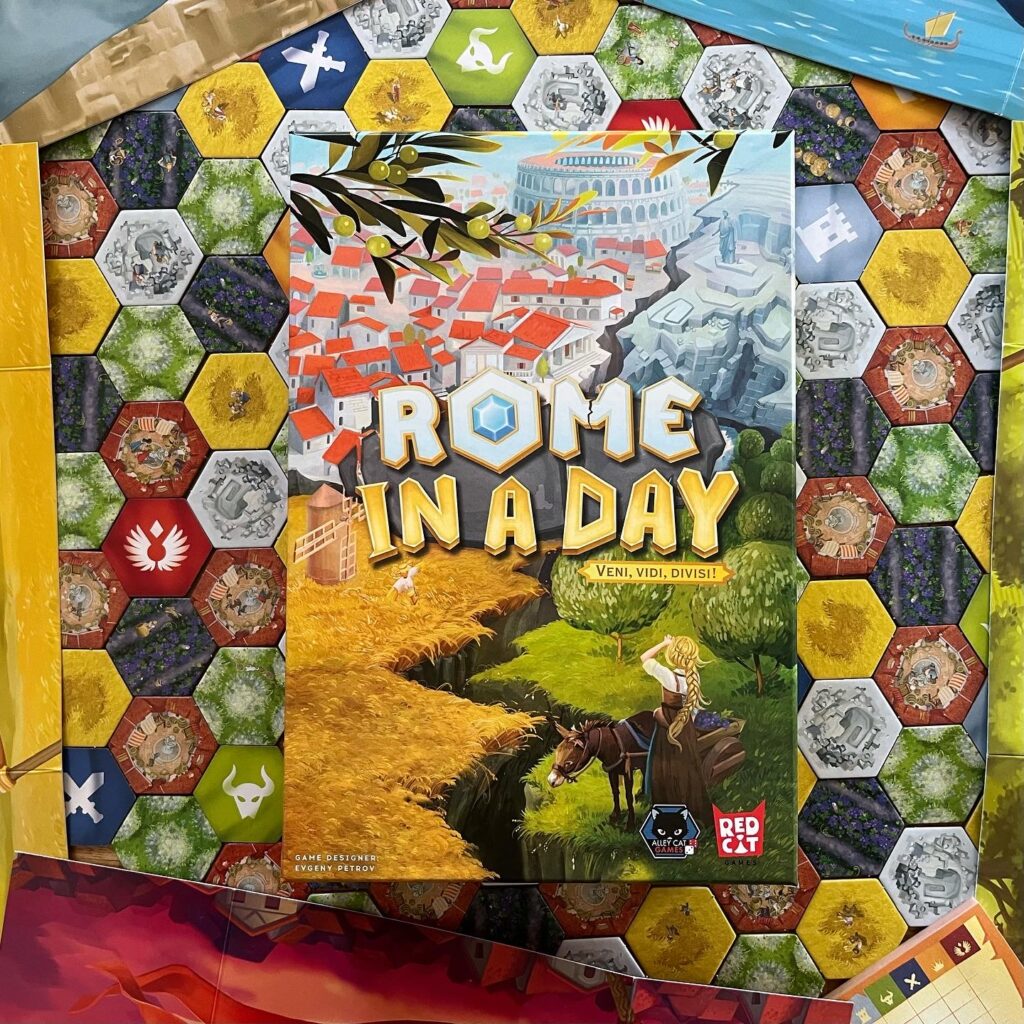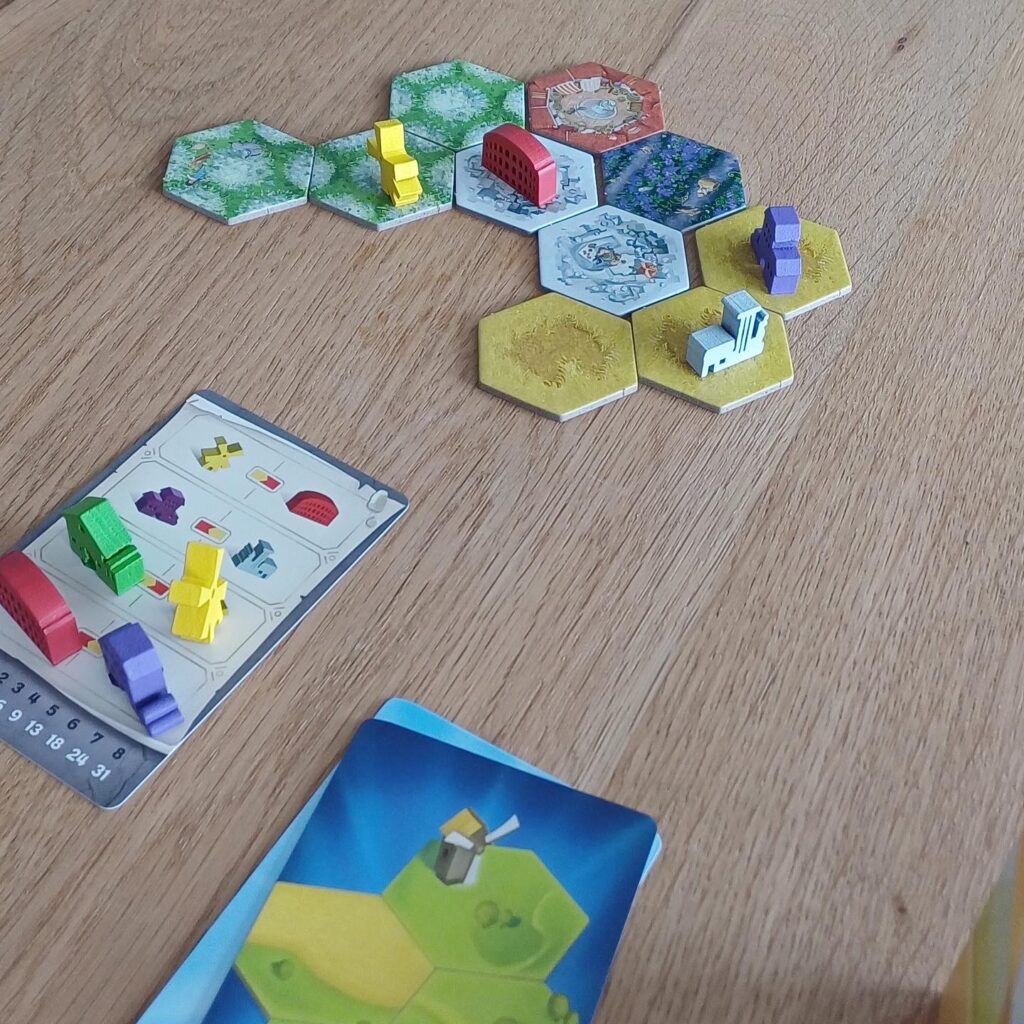“Hey, Rome wasn’t built in a day huh,” a common saying that means everything takes its time. Wanting something too soon is often not very wise. ‘Rome in a Day’ plays on this saying in a nice way, as it is a very accessible divide-and-choose game that takes thirty minutes at most and usually takes less time. Another similarity to the saying is that it involves laying down tiles (or in other words: it involves building). So much for the similarities.

Each player gets his own set of tiles, twenty in total. The tiles show olive groves, fields, vineyards, town quarters and quarries. In addition, each player gets a screen, two choice cards, a reminder tile, a building card (including buildings!) and four crystals. Eight buildings corresponding to the pictures on the building cards must be placed on the building cards.
‘Rome in a Day’ (or ‘Rome in about Twenty Minutes’) is played in four rounds. In one round, each player takes five tiles and places the top two buildings on the first two tiles. Then you grab the screen which allows you to secretly make two groups of the five tiles. So there will always be one group with more tiles than the other group. To the smaller group you place one crystal. Then another secret action: you either place the choice card ‘large’ covered between you and the player whose lands you are stealing or the choice card ‘small’. Everyone at the same time turns over their choice card and takes the group corresponding to it. Now you have a group of your own and you have taken a group from someone else. The final phase is the expansion phase. In this phase, you place all the tiles in your area. Do this tactically, as you will score the most points and you will (hopefully) be the winner after four rounds and can you call yourself Julius from now on?


How does the scoring work? There are two ways to collect points: crystals and buildings. All crystals must be added up, and the building card shows how many crystals are worth. For example, for two crystals the player gets five points and for six crystals eighteen points. So buildings also provide points. If a building is on or adjacent to a matching tile, it scores one point per tile. The building only needs to be adjacent to one tile to earn a chain of points.
As I said, it is an accessible game that doesn’t take too long. Does that make it a quick in between game that you only play once anyway? No, it doesn’t. I like the concept. You use your choices to make others earn points, so you can’t just think about your own domain. In addition, the buildings are nicely made (and sturdy) and the rest of the art work is very appealing. Plenty of tactical element, but also easy to explain for new players. Just a good game!






